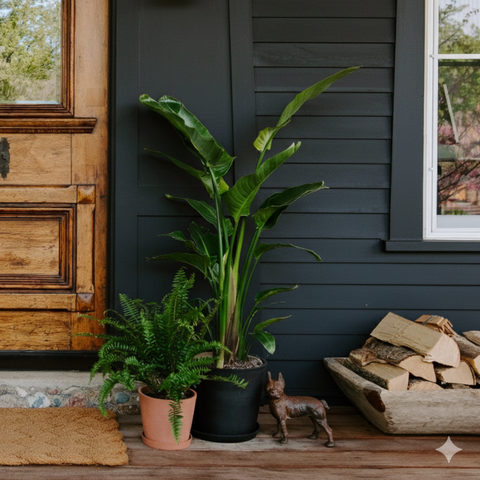Transitioning houseplants from summer to fall involves adjusting their environment and routine to keep them healthy and thriving during cooler months. Whether you're caring for tropical varieties or hardy succulents, these simple steps and expert tips will make this transition seamless.
Why Transitioning Your Houseplants from Summer to Fall Is Important
Houseplants thrive in warm and humid conditions, which they get plenty of during the summer. But as the temperatures drop and daylight decreases in the fall, plants can struggle with the shift. Indoor plants—from popular Pothos varieties to elegant Philodendrons—may experience slow growth, yellowing leaves, or even die back without proper care. You can ensure they stay happy and healthy by making a few adjustments.
1. Bring Houseplants Indoors Gradually
If your houseplants spent the summer outdoors, gradually bring them inside. Sudden changes in light, temperature, and humidity can shock your plants. Start by moving them into a shaded outdoor area for a few days before transitioning them indoors. This will help them adjust to the reduced light indoors.
Expert Tip: Use a damp cloth or microfiber gloves to wipe down leaves and check for pests before bringing them inside. This keeps your home bug-free and ensures your plants stay healthy. For stubborn pests, consider using our organic houseplant care spray to protect your greenery naturally.
2. Adjust Watering Habits for Fall
During the fall, houseplants' growth rates typically slow due to less sunlight and cooler temperatures. Overwatering becomes a common problem as plants need less water in the fall than in the summer. Allow the soil to dry out more between waterings and reduce the frequency.
Plants like Snake Plants and Peperomias are susceptible to overwatering during cooler months, so adjust your care routine accordingly.
3. Provide Proper Lighting
As days get shorter, natural light decreases, which can affect your plant's health. Move your houseplants closer to windows to maximize sunlight. If your home lacks natural light, consider using grow lights as a supplement.
Low-light-tolerant plants like Golden Pothos and Philodendron Brasil can adapt well to reduced lighting, but they'll still appreciate being positioned near bright, indirect light sources.
4. Maintain Humidity Levels
Indoor heating systems can dry out the air, which isn't ideal for most houseplants. Many plants prefer a humid environment, especially tropical varieties like ferns and Calatheas. Consider using a humidifier or placing water-filled trays near your plants to maintain optimal humidity. Grouping plants can also help retain moisture in the air.
5. Prune and Clean Your Plants
Fall is a great time to prune your houseplants. Remove any yellowing or dead leaves to promote healthy growth. Cleaning the leaves also helps improve light absorption, which is crucial as daylight diminishes.
Use houseplant pruning shears for clean cuts, and gently wipe dust off the leaves with a soft, damp cloth. Regular maintenance keeps plants like Marble Queen Pothos and Neon Pothos looking their best year-round.
6. Fertilize Sparingly
Most houseplants enter a dormant or slow-growing phase during fall and winter, so they don't require as much fertilizer. Over-fertilizing can lead to salt buildup in the soil and damage your plants. If you fertilize, choose a balanced, slow-release fertilizer and apply it sparingly.
Shop Quality Houseplants and Care Products
At The Botanical Bar, we offer a curated selection of houseplants and care products to help your green friends thrive year-round. Visit our Indianapolis location at 1103 N College Ave or shop online for convenient pickup or eco-friendly shipping.
Looking for pet-friendly plants? We have a special collection that's safe for your furry companions while still bringing beauty to your space.





Comments (0)
There are no comments for this article. Be the first one to leave a message!